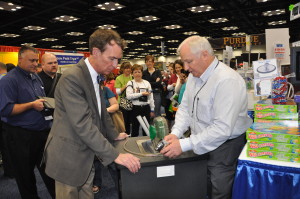
Energy Sources in a Classroom – Scavenger Hunt
by: Roy Bentley
I had the opportunity to attend the NSTA Convention that was held last month in Boston. It was a great show with amazing displays, topics and speakers. And of course, we had the PowerWheel there demonstrating how easy it is to teach about energy.
One of the points that came up during the show that struck me as worth exploring further was when we asked the teachers we were working with was “what sources of energy do we have in the classroom” The teachers at the show answered the lights, the power outlets, the sunshine through the windows and possibly the forced air from the heating/cooling system. No one referred to the faucet. When the teachers were asked if they had ever had the electricity fail in the school they all answered yes. When asked if they had ever experienced a water failure in the school they all answered no. It was concluded that the most reliable source of energy in the room was the faucet/(gravity).
Here is a simple classroom or home activity to help students realize how many energy sources are around them all the time! Read the rest of this entry »



 Posted by Tami O'Connor
Posted by Tami O'Connor  by Brandon DeBritz
by Brandon DeBritz